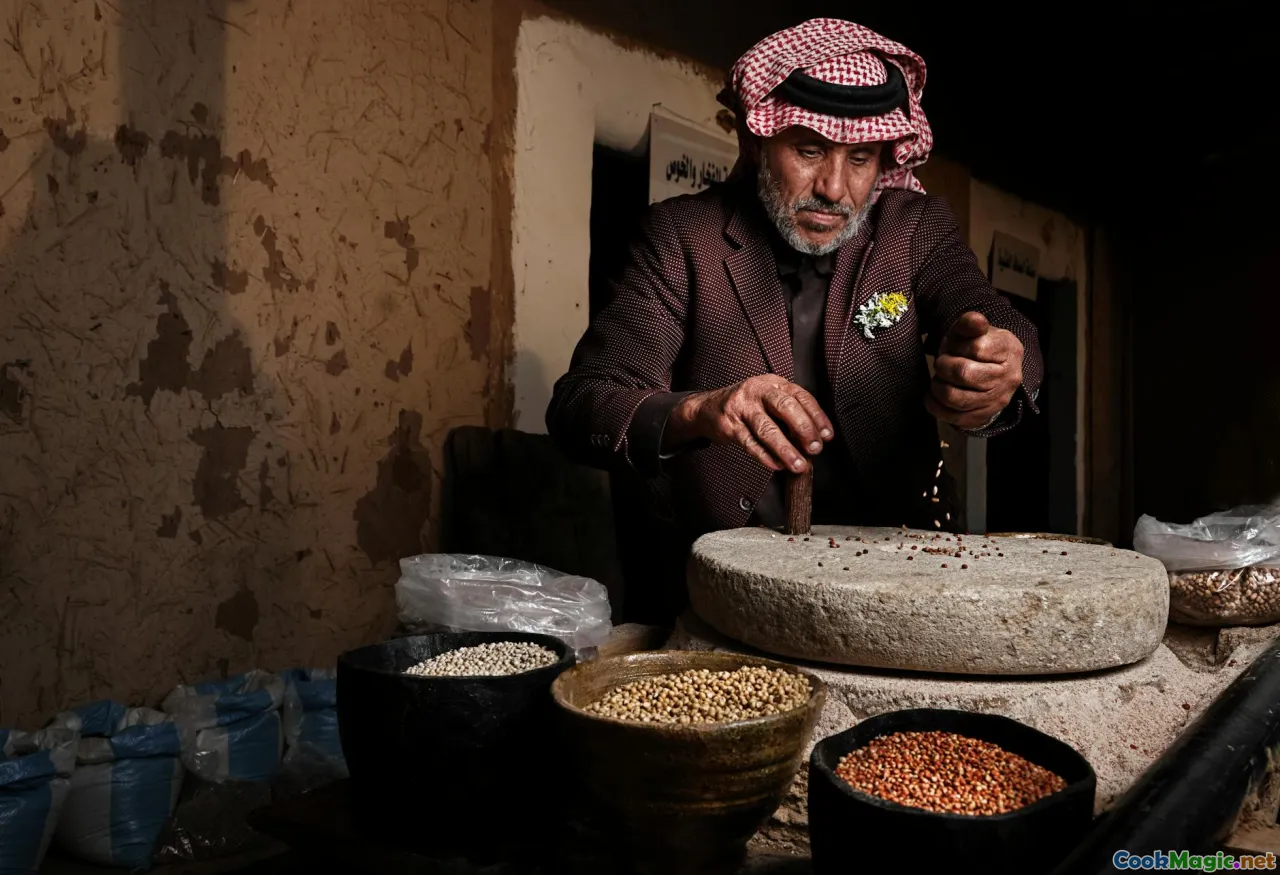Reviving Ancient Egyptian Cooking Techniques
8 min read Discover the rich culinary history of Egypt by exploring and reviving ancient cooking techniques that connect us to a civilization of flavor and innovation. June 10, 2025 12:02
Reviving Ancient Egyptian Cooking Techniques
Imagine stepping back in time to a bustling marketplace along the Nile, where the aroma of roasted grains, fragrant herbs, and smoky meats wafts through the air. The bustling activity, the clattering of pottery, and the rhythmic pounding of mortar and pestle evoke a civilization deeply rooted in culinary tradition. Ancient Egyptian cuisine, often overshadowed by its monumental architecture and pharaohs, holds a treasure trove of cooking techniques that have survived millennia. Today, a growing movement seeks to revive these methods, reconnecting us with a culinary heritage that is as rich and vibrant as the history of Egypt itself.
The Cultural Significance of Ancient Egyptian Cuisine
Ancient Egypt was a land of abundance, where the Nile’s fertile banks nurtured crops and livestock that formed the backbone of daily life. Food was not merely sustenance but a vital part of religious rituals, social hierarchy, and cultural identity. Pharaohs and commoners alike cherished dishes that combined simple ingredients with innovative cooking methods.
The ancient Egyptians believed that food had spiritual significance. Offerings to gods, funeral rituals, and royal banquets all showcased their sophisticated understanding of flavors and presentation. Reviving these techniques is not just about recreating recipes; it’s about honoring a civilization’s relationship with nourishment and its environment.
Historical Roots of Egyptian Cooking Techniques
Earthen Ovens and Clay Cookpots
One of the most iconic ancient Egyptian cooking methods involved the use of clay ovensandpottery. These earthen vessels, called dafeer, were used for slow roasting and baking bread. The clay retained heat efficiently, allowing for even cooking and a distinctive earthy aroma.
Pit Barbecuing and Smoking
The Egyptians mastered the art of pit barbecuing—digging shallow pits, lining them with hot stones, and placing meat or fish wrapped in leaves before covering with earth. This method imparted a smoky flavor and tender texture. Smokehouses also played a role in preserving and flavoring meats.
Grain Processing and Baking
Wheat and barley were staple grains. Ancient Egyptians developed grain millingtechniques, including grinding with stone querns, and baking methods involvingflatbreads cooked on hot stones or in clay ovens.
Use of Herbs and Spices
Herbs like coriander, cumin, dill, and fenugreekwere integral to flavoring dishes. The Egyptians also employedfermentation techniques to produce beer and wine, integral to their culinary culture.
Techniques Revived for Modern Kitchens
Recreating the Dafeer Oven
Modern chefs and home cooks are experimenting with clay oven recreations—using terracotta pots or specially designed pizza ovens to mimic the slow, even heat of ancient pottery. These methods enhance flavor and texture, especially in baking bread or roasting vegetables.
Smoking and Pit Cooking
Using smoker boxesoroutdoor pits, enthusiasts are rediscovering the smoky profiles of ancient Egyptian meats. Marinating meats with traditional herbs before slow-smoking imparts authentic flavors.
Authentic Grain Milling
While electric grinders are common today, some artisanal bakers prefer stone grinding to emulate ancient techniques, resulting in coarser, more flavorful flours for bread and pastry.
Herb Blends and Fermentation
Replicating ancient spice blends and fermentation processes offers a taste of history. Fermented beverages like beerandmead are gaining popularity among home brewers experimenting with Egyptian recipes.
Personal Journey: Connecting with the Past
My own exploration into ancient Egyptian cooking began with a simple quest to understand the flavors of a civilization that once built pyramids and worshipped gods. I started by researching archaeological findings and ancient texts, which revealed fascinating clues about ingredients and methods.
One memorable experience was reconstructing Egyptian flatbread using a traditional clay griddle. The aroma of baking bread, infused with cumin and coriander, transported me to a time when such bread was daily sustenance and a sacred offering.
In another experiment, I attempted to replicate a smoked fish dish, using a makeshift pit and native herbs. The result was a tender, smoky delicacy that felt like a direct link to ancient culinary rituals.
The Significance of Revival Today
Reviving these techniques is more than culinary nostalgia; it is a cultural renaissance that fosters appreciation for Egypt’s rich history. It encourages sustainable practices—using natural materials and traditional methods—and promotes a deeper understanding of the environment.
Furthermore, this revival enhances culinary diversity. Modern chefs blending ancient methods with contemporary plating create a bridge between past and present, inspiring new generations to appreciate heritage foods.
Practical Tips for Recreating Ancient Egyptian Techniques
- Start with authentic ingredients: Use herbs like coriander, cumin, and dill, and grains like wheat and barley.
- Experiment with clay and earthenware: Use terracotta pots or make your own clay oven for baking and roasting.
- Incorporate smoking techniques: Use a smoker box or outdoor pit for meats and fish.
- Embrace fermentation: Brew your own Egyptian-style beer or ferment vegetables with traditional methods.
- Study historical recipes: Many ancient recipes have been reconstructed from archaeological finds, providing a blueprint for experimentation.
Final Reflections
Reconnecting with ancient Egyptian cooking techniques offers a profound culinary journey—one that celebrates ingenuity, spirituality, and the timeless human connection with food. These methods, once hidden beneath layers of history, are now being rediscovered, reinterpreted, and relished.
As we embrace these techniques, we not only honor a magnificent civilization but also enrich our own culinary repertoire. Whether you’re a professional chef or a home cook, integrating ancient Egyptian methods into your kitchen can unlock new flavors, textures, and stories—transforming cooking from mere sustenance into a voyage through time.
Let us cook with reverence, curiosity, and a desire to keep history alive—one dish at a time.









